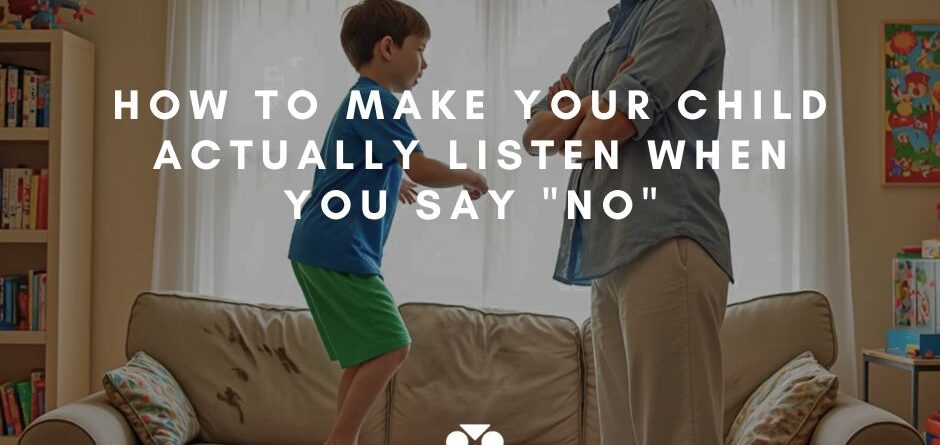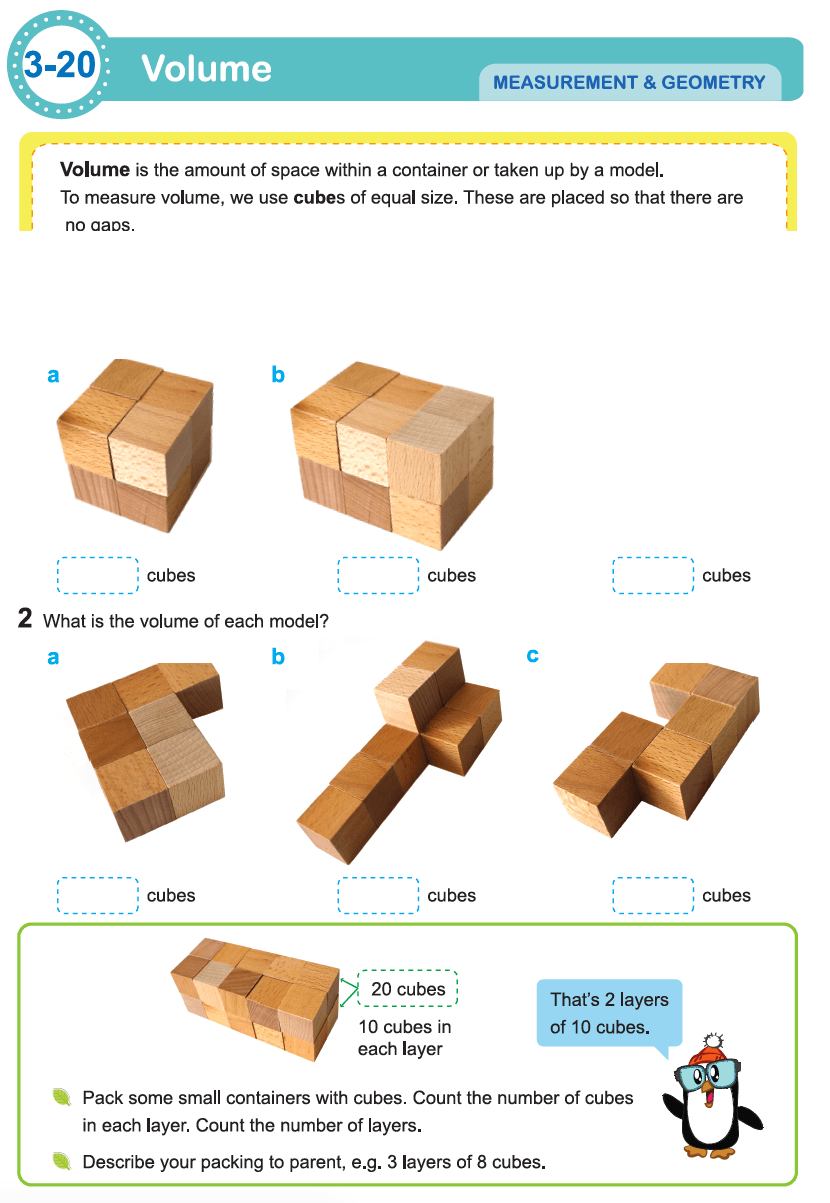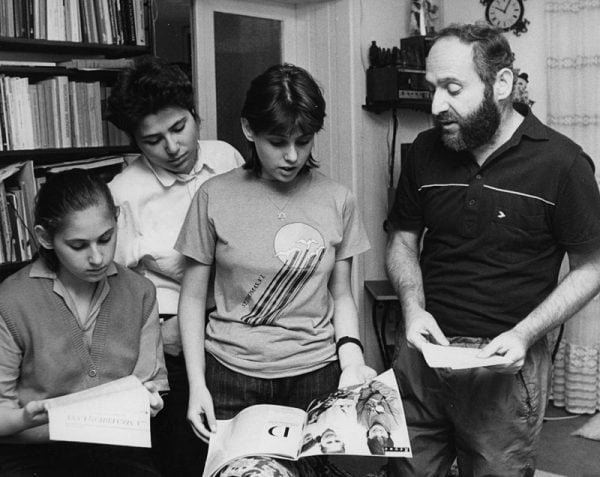How to Make Your Child Actually Listen When You Say “No” (Without Turning Into the Mean Parent)
Does this sound familiar? You say “no” to your 4-year-old about jumping on the couch. Five minutes later, they’re bouncing higher than a kangaroo on espresso. You repeat yourself. They ignore you. Your voice gets louder. They get louder. Before you know it, you’re in a full-blown power struggle that leaves everyone feeling defeated.
Here’s a shocking truth: 73% of parents admit they give in to their child’s demands just to stop the tantrum—but this actually makes future meltdowns worse.
What if I told you there’s a way to make “no” mean “no” the first time, without becoming the parent who barks orders or bribes with screen time?
Why Your “No” Falls on Deaf Ears (And It’s Not Because Your Child Is Defiant)
Your child isn’t ignoring you because they’re naturally rebellious. They’re testing whether you can actually keep them safe. When your boundaries feel shaky, their world feels unsafe.
The deeper truth: Children who are engaged in meaningful activities are naturally more cooperative. When their hands and minds are busy with purposeful play—like building with blocks, creating patterns, or exploring shapes—they’re less likely to seek attention through boundary-testing.
Here are the three hidden reasons your limits aren’t working:
1. You’re Skipping the Connection Step
The mistake: You shout “Stop running!” from across the kitchen while washing dishes.
What works: Get down to their eye level. Use their name. Make that human connection first. Children cooperate when they feel seen, not when they feel managed like a problem to solve.
2. Your Body Language Betrays Your Words
Your mouth says “no,” but your shoulders say “maybe.” If you’re fidgeting, avoiding eye contact, or speaking in an uncertain tone, your child instantly knows you don’t really mean it.
The fix: Stand tall. Speak calmly. Let your confident posture tell them, “I’ve got this handled, and I’ve got you.”
3. You’re Using Too Many Words When Emotions Run High
When your child is dysregulated, their brain can’t process long explanations. Saying “We don’t throw toys because it’s dangerous and someone could get hurt and…” sounds like white noise to an upset child.
Instead, try: “I won’t let you throw the toy. You’re safe.”
The Game-Changing Method That Actually Works
Meet Sarah, a mom who tried everything—time-outs, reward charts, even hiding in the bathroom to cry. Her 3-year-old son would hit, kick, and destroy things daily. Nothing changed until she discovered this simple three-step approach:
Step 1: Set Clear Expectations Before the Storm
Don’t wait for chaos to set rules. Before you enter the grocery store: “We’re buying milk and bread today. You can help me find them, but we’re not buying candy.”
This isn’t about control—it’s about giving your child a roadmap for success.
Step 2: Expect Resistance (Because It’s Normal)
Your child will test the boundary. That’s their job. Your job? Stay calm and help them through it.
Remember: When they push back, they’re not being “bad.” They’re asking, “Do you really mean it? Can I count on you to keep me safe?”
Step 3: Follow Through With Loving Firmness
If they grab candy anyway, calmly remove it. “I said no candy today. I know you’re disappointed.”
Hold the boundary. Hold their feelings. Don’t hold grudges.
When Things Get Physical: Your Child Isn’t Broken
Hitting, kicking, throwing—these behaviors terrify parents. But here’s what you need to know: aggressive behavior doesn’t mean your child is destined for trouble. It means they’re overwhelmed and need your help.
Step 1: Safety First, Always
Calmly but firmly stop the behavior:
- “I won’t let you hit me. I’m holding your hands to keep us both safe.”
- “I can’t let you throw that. I’m moving it up high.”
This isn’t punishment. This is leadership.
Step 2: Connect Before You Correct
After the storm passes, resist the urge to lecture. Your child likely feels ashamed. Instead, offer empathy:
“That was a big feeling. You’re not in trouble. I’m here, and we’ll figure this out together.”
Why this works: Shame blocks learning. Connection opens it.
Five Ways to Use Humor to Stop Power Struggles Before They Start
Want to know the secret weapon that transforms resistance into cooperation? Laughter.
1. Turn Compliance Into a Game
Don’t want to put on shoes? “I bet you can’t get your shoes on before I count to ten!” Suddenly, getting ready becomes an adventure.
2. Create Silly Challenges
“Can you brush your teeth like a robot?” Watch how quickly they head to the bathroom when it’s fun.
3. Let the Toys Be Your Teaching Partners
Instead of fighting over cleanup time, make it collaborative. “These colorful blocks want to go home to their special box. Can you help them find their way?” Open-ended educational toys like building blocks, pattern pieces, and geometric shapes naturally invite cooperation because children see them as friends, not chores to manage.
Pro tip: Quality educational toys (like Spielgaben’s open-ended learning sets) become your secret weapon for smooth transitions. When children are engaged with meaningful play materials, they’re less likely to resist when it’s time to move on to the next activity.
4. Use Strategic Silliness
If tension is rising, shift the energy. “Should we have a dance party or sing the cleanup song?”
5. Embrace Toilet Humor (Yes, Really)
Potty jokes make kids giggle and cooperate. If it works, use it. “Did someone say this toothbrush smells like stinky feet?”
What About Consequences?
You’re probably thinking, “But don’t they need to learn consequences?”
Here’s the truth: Consequences only work when your child feels emotionally safe. When they’re dysregulated, punishment feels like rejection.
Better approach: Wait. Reconnect. Then teach.
“Next time you’re angry, you can stomp your feet or yell, but hitting isn’t okay. Let’s practice using words instead.”
Your Path Forward: Three Simple Steps You Can Start Today
You don’t need to overhaul your entire parenting approach overnight. Start with these:
- This week: Practice the connection-first rule. Before giving any instruction, get on their level and make eye contact. If your child is playing with educational toys or engaged in creative activities, acknowledge their work first: “I see you’re building something amazing with those blocks. In two minutes, it’ll be time for lunch.”
- Next week: Add one moment of humor to a daily struggle. Turn tooth-brushing into a silly game or create a funny cleanup song. Consider rotating quality educational materials to keep engagement high—when children have access to open-ended toys that grow with them, daily transitions become smoother.
- Week three: When they test a boundary, remind yourself: “They’re not giving me a hard time—they’re having a hard time.”
Remember, every time you hold a loving limit, you’re not just managing behavior. You’re building your child’s sense of security, teaching them self-control, and showing them what unconditional love looks like in action.
The beautiful truth? When children feel truly safe with your boundaries, they naturally want to cooperate. You become their safe harbor in a chaotic world, not the enemy they need to defeat.
Start small. Stay consistent. Trust the process.
Your child doesn’t need a perfect parent—they need a present one. Set the limit. Add the love. Watch the magic happen.
Take Action Now: Choose one daily struggle (bedtime, cleanup, getting ready) and try the three-step method this week. Your calmer, more connected home is just one loving limit away.













LEAVE A COMMENT